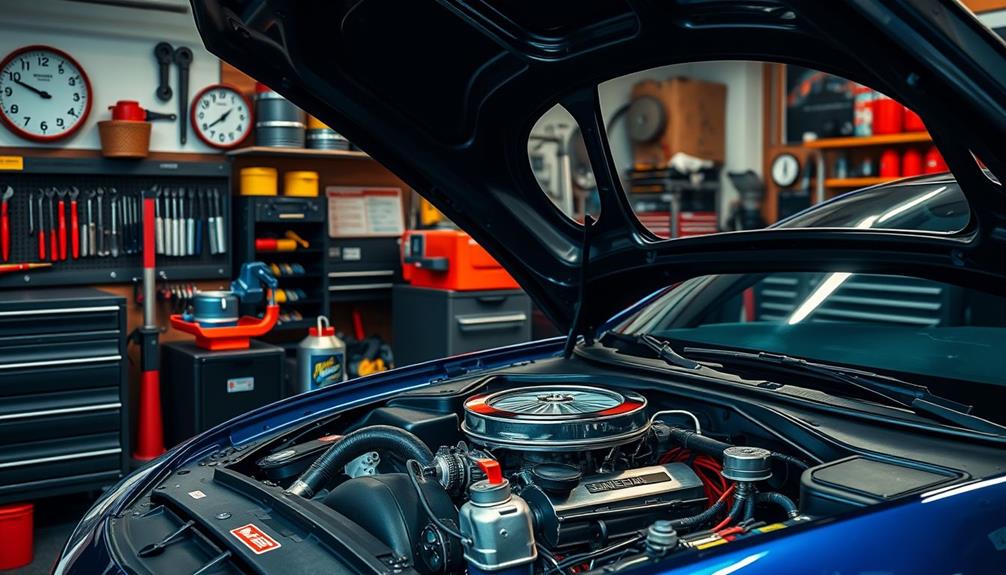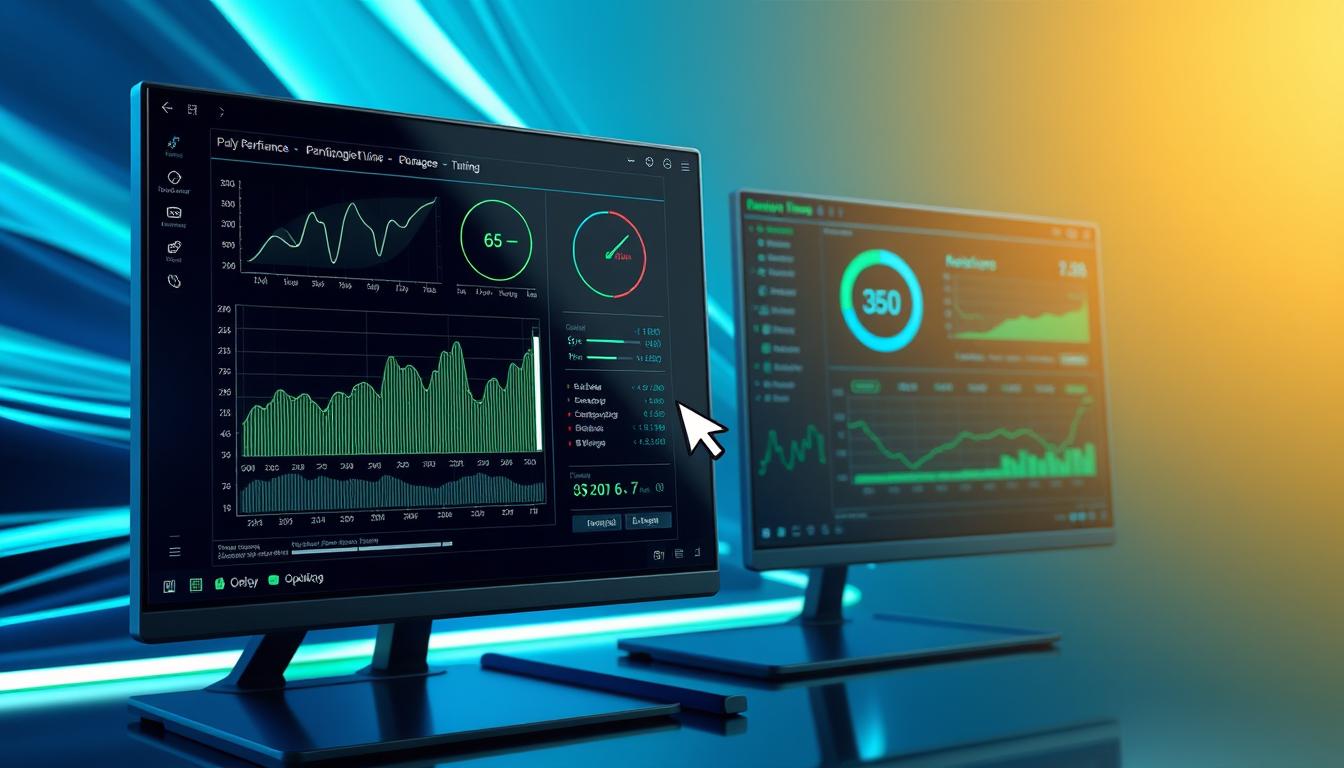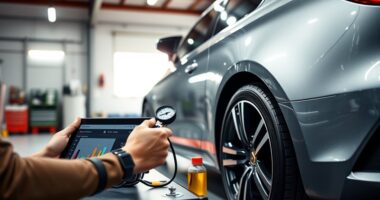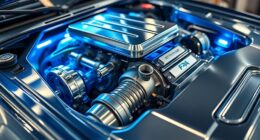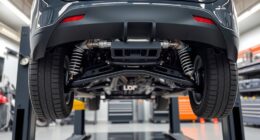Car tuning's a great way to boost your vehicle's performance. Start by gathering tools like an OBD-II scanner and tuning software. Familiarize yourself with your engine's specs for informed adjustments. Connect your laptop to the ECU and upload your new parameters. Test drive to gauge improvements, then tweak based on feedback. Upgrading parts like air filters can further enhance efficiency. With proper tuning, you might achieve a 5-10% power increase without any hardware changes. Curious about more advanced techniques and community resources? You'll uncover valuable insights that can take your tuning skills even further.
Key Takeaways
- Start by gathering essential tools such as an OBD-II scanner and tuning software to facilitate the tuning process.
- Familiarize yourself with your vehicle's engine mechanics and specifications to make informed tuning adjustments.
- Connect your laptop to the ECU and upload new tuning parameters for enhanced performance and efficiency.
- Conduct test drives to evaluate the tuning effects, making iterative adjustments based on your feedback.
- Consider upgrading performance parts like air filters or exhaust systems for additional power gains alongside tuning.
Understanding Car Tuning
Car tuning is all about getting the most out of your vehicle's performance. By optimizing various components, you can greatly enhance engine performance, increase power output, and improve fuel efficiency.
One of the first steps in car tuning involves ECU remapping, which adjusts the vehicle's computer settings to better match your driving style and performance goals.
You'll also want to take into account suspension tuning, as this can dramatically affect your handling and overall driving experience. Upgrading your air intake can lead to better airflow, further boosting engine efficiency.
Manufacturers often leave power potential untapped in factory settings, so tuning allows you to reveal that hidden performance.
When you modify your vehicle with performance parts, you're tailoring it to suit your needs, whether that's for daily driving or track days.
Understanding the basics of the tuning process is essential, as it helps you make informed decisions about modifications.
The Tuning Process
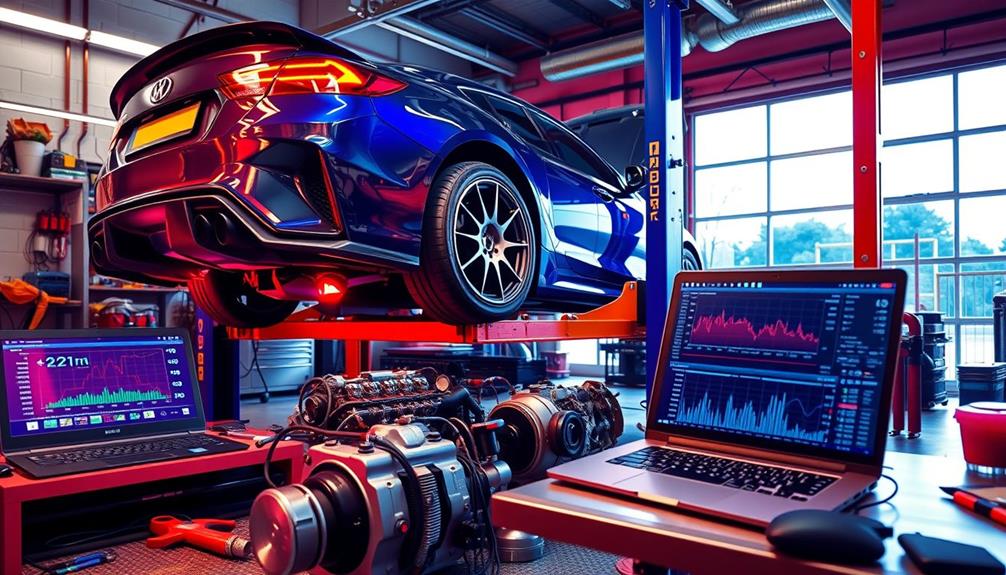
Before diving into the tuning process, it's important to gather the right tools, such as an OBD-II scanner and tuning software, which will help you modify engine parameters effectively.
Here's how you can approach the tuning process step-by-step:
- Familiarize Yourself: Understand your vehicle's engine mechanics and specifications. This knowledge is significant for making informed tuning adjustments that impact performance.
- Connect to the ECU: Use your laptop to connect to the engine control unit (ECU). Upload new tuning parameters to optimize settings for enhanced performance and fuel economy.
- Conduct Test Drives: After making initial tuning adjustments, take your car for test drives. This real-world feedback is essential for evaluating how the modifications perform under various driving conditions.
- Make Adjustments: Based on your test drive observations, make necessary fine-tuning adjustments. It's common to tweak settings multiple times to achieve the best performance.
Tools and Equipment Needed

When tuning your vehicle, having the right tools and equipment can make all the difference in achieving peak performance.
First off, an OBD-II Scanner is essential for reading diagnostic trouble codes, helping you pinpoint any issues before you start tuning.
Next, you'll need Tuning Software to modify engine parameters, allowing you to optimize your vehicle's performance accurately.
Don't forget about Performance Parts; upgrading components like air filters, exhaust systems, and suspension components can greatly enhance your ride.
For mechanical adjustments and installations, a set of Basic Hand Tools—think wrenches, screwdrivers, and pliers—is a must.
Safety shouldn't be overlooked either. Equip yourself with Safety Gear such as gloves and safety glasses, and keep a fire extinguisher nearby for emergencies.
With these tools and equipment, you'll be well-prepared to tackle the challenges of tuning a modified engine.
Power Gains From Tuning
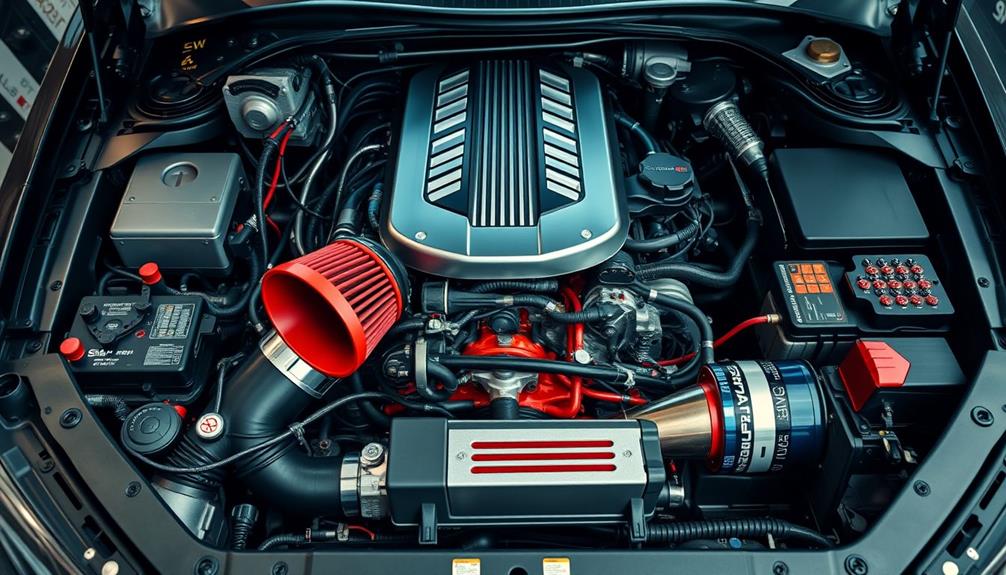
Releasing the potential of your vehicle through tuning can lead to impressive power gains.
Whether you own a turbocharged car or a naturally aspirated engine, tuning your ECU can markedly enhance performance and efficiency.
Here are four key points to take into account:
- Power Gains: Expect a typical increase of 5-10% in power without any hardware changes.
- Turbocharged Advantage: Turbocharged vehicles often see more considerable gains, making them prime candidates for tuning modifications.
- Research Matters: Not all factory tunes provide additional power, so it's essential to investigate your vehicle's specific tuning potential.
- Hardware Upgrades: For naturally aspirated engines, achieving notable power gains might require additional modifications to fully realize the benefits of tuning.
Community and Learning Resources

For those keen on enhancing their tuning skills, a wealth of community and learning resources is available to help you on your journey. The High Performance Academy (HPA) stands out as a premier option, offering structured online courses tailored for various skill levels.
With over 30,000 individuals benefiting from their EFI Tuning Fundamentals, Practical Standalone Tuning, and Practical Reflash Tuning courses, you can trust their expertise to elevate your performance tuning knowledge.
HPA also provides a free introductory lesson, allowing you to grasp the essential tuning concepts before committing to a full course. Engaging with the HPA community can further enrich your learning experience.
Their new garage feature lets you showcase your vehicles and connect with fellow enthusiasts, creating a supportive environment for car owners.
Plus, first-time enrollees receive a $50 discount without needing a coupon, making these valuable resources accessible. HPA encourages knowledge sharing through a referral program, offering additional discounts when you invite friends to join.
Immerse yourself in HPA's courses and community, and unleash your vehicle's potential while enjoying the camaraderie of other passionate tuners!
Frequently Asked Questions
What Are the Steps to Tuning a Car?
To tune your car, start with an OBD-II scanner to check for trouble codes. Adjust engine parameters, upgrade performance parts, test drive for feedback, and re-scan to verify everything's running efficiently.
What Are the Stages of Car Tuning?
When you consider car tuning stages, you'll find Stage 1 focuses on ECU adjustments, Stage 2 enhances exhaust flow, Stage 3 involves major upgrades, and Stage 4 maximizes performance through extensive modifications. Each stage builds upon the last.
Can I Tune My ECU Myself?
Sure, you can tune your ECU yourself! Just grab the right software and tools, but be careful—one misstep could turn your ride into a clunker. Research your vehicle thoroughly before diving in.
How Do People Tune Cars?
People tune cars by adjusting the engine's ECU settings, optimizing fuel injection and ignition timing. You can use diagnostic tools, tuning software, or seek professional help to enhance your vehicle's performance safely and effectively. If you’re looking to do some minor tuning yourself, make sure you understand the car tuneup basics before attempting any adjustments. It’s important to have a good understanding of your vehicle’s specific engine and mechanical systems, as well as the potential impact of any changes you make. Proper research and a cautious approach are key to avoiding damaging your car’s performance or voiding any warranties.
Conclusion
So, you're ready to unseal your car's potential and join the ranks of the tuning elite? Just remember, with great power comes great responsibility—or at least a hefty insurance premium. You might just turn your humble ride into a roaring beast, but don't be surprised if your gas station visits become more frequent than your social life. Embrace the chaos of tuning, and who knows? You might just end up with a vehicle that's as fast as your internet connection!
